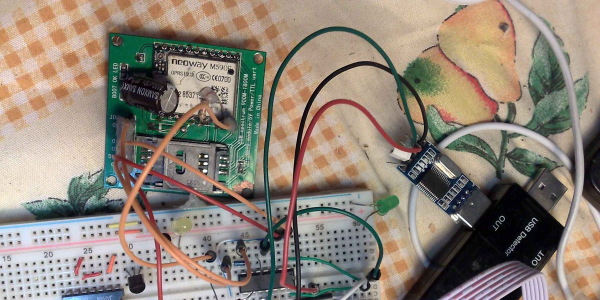For many projects, a WiFi connection is overkill, too complicated, or too far away to work properly. Even though it’s relatively ubiquitous, sometimes the best choice for getting data to or from the real world is a connection to the cellular network, which can be done with the M590 module for about a dollar each. For that price, lots of people have had the opportunity to explore the module itself, and [marcrbarker] shows some of the extra, unadvertised, features it has.
Acting as a GSM module that can send and receive SMS messages is just the tip of the iceberg for this tiny device which we saw once before for a DIY GPS tracker. With a USB TTL serial data module, a lot more is on the table including answering voice calls and responding with DTMF tones, operate as a dial-up modem, connect with TCP, and even has some FTP capabilities. [marcrbarker] also suggests that it could do “call pranking” where it can send signals without being charged for a call.
There are a lot of details on the project site about all of this newfound functionality, and it reminds us of a time when it was discovered that not only was the ESP8266 a cheap WiFi module, but it could also run custom programs on its own. While the M590 probably can’t do all of that, it does seem to have a lot more locked away than most of us had thought before.







 Amazingly these computers were composed of all digital logic, no centralized controller chip in this baby. That explains the need for the seven circuit boards which host a legion of logic chips, all slotting into a backplane.
Amazingly these computers were composed of all digital logic, no centralized controller chip in this baby. That explains the need for the seven circuit boards which host a legion of logic chips, all slotting into a backplane.










